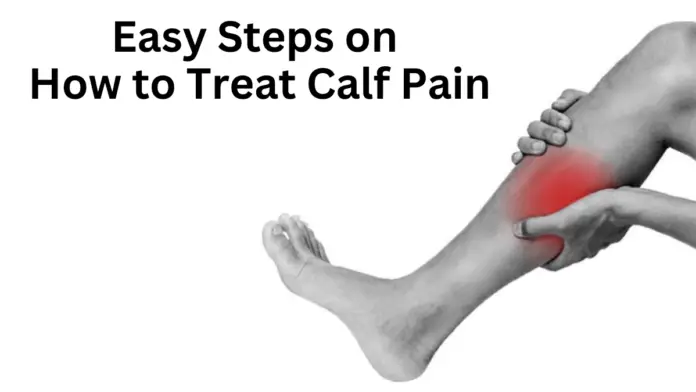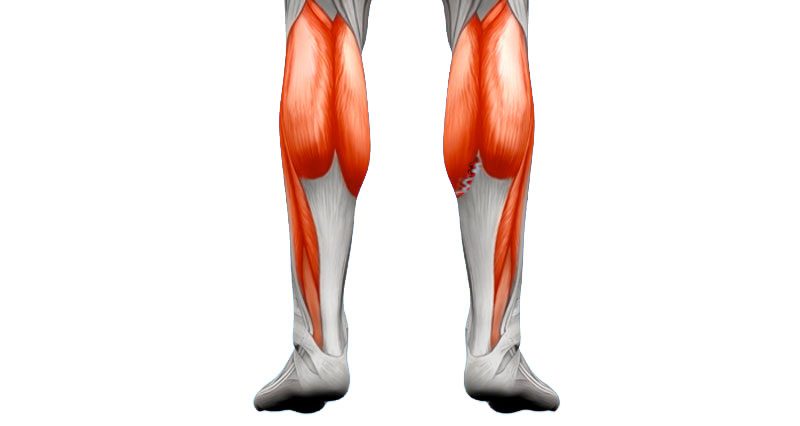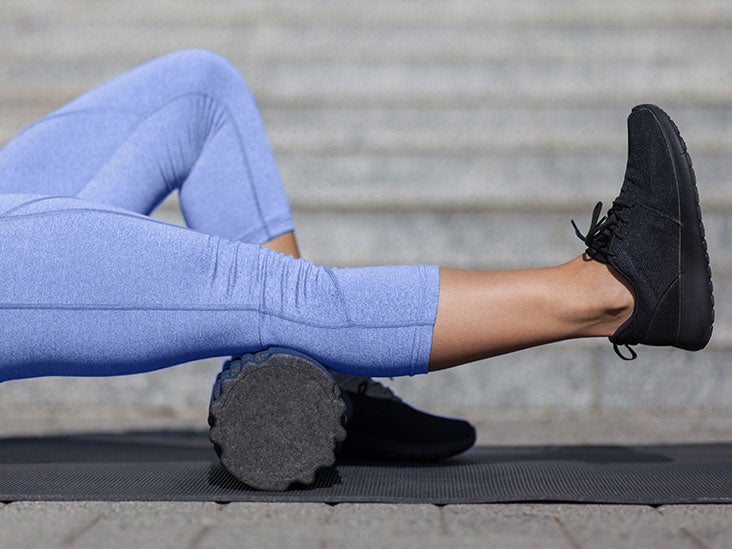
Calf pain is a common ailment that can stem from various causes – from simple muscle strain to more serious conditions such as deep vein thrombosis. It can significantly hinder the performance of day-to-day activities, impacting the quality of life. A sudden onset of calf pain may even disrupt simple actions such as walking or climbing stairs, while a persistent ache might be indicative of underlying chronic conditions. Understanding the cause is the first step in knowing how to treat calf pain effectively. This article will explore the common causes of calf pain and the best ways to treat it, supported by factual data and research, to help you regain your mobility and comfort.
Understanding Calf Pain: The Anatomy and its Importance in Movement
The calf is primarily made up of two major muscles – the gastrocnemius, visible as the prominent muscle at the back of the leg, and the soleus, a smaller muscle lying underneath the gastrocnemius. These muscles converge to form the Achilles tendon, which attaches to the heel bone. The calf muscles play an essential role in enabling movements such as walking, running, and jumping. They function to pull the heel up, allowing the foot to push off the ground, and control the speed of the foot’s descent onto the ground, thus providing stability and balance.
Understanding the anatomy of the calf and the role it plays in movement can provide valuable insights into why an injury or strain in this area can cause significant discomfort and disruption to normal functioning. The complexity of the calf’s muscular structure also underscores the importance of proper care and treatment in case of injury or pain. Knowing how to treat calf pain correctly starts with a good understanding of the very muscles you’re trying to heal.
Common Causes of Calf Pain
1. Muscle Strain
Muscle strains are one of the most common causes of calf pain. These occur when the muscle fibers in the calf are overstretched or torn, often as a result of intense physical activity, lack of proper warm-up, or fatigue. Symptoms typically include sudden pain, bruising, and swelling.
Read Also: How To Treat Tendonitis Elbow
2. Muscle Cramp
Often known as a ‘charley horse,’ muscle cramps are sudden, involuntary contractions of the calf muscles. They can occur at any time but are most common during or after exercise or at night. Dehydration, electrolyte imbalances, and muscle fatigue are common triggers.
3. Tendinitis
Tendinitis refers to inflammation of a tendon – in this case, the Achilles tendon. It is often caused by repetitive strain, such as running or jumping, and can cause pain, swelling, and stiffness in the calf and heel.
4. Deep Vein Thrombosis (DVT)
While most causes of calf pain are musculoskeletal, some are vascular, like Deep Vein Thrombosis. This condition occurs when a blood clot forms in the deep veins of the leg, causing pain, swelling, and warmth over the affected area. DVT is a serious condition requiring immediate medical attention.
Understanding these common causes of calf pain can help in effectively diagnosing and deciding how to treat calf pain. In the following sections, we will discuss various treatment methods and preventive measures for each of these conditions.
How to Diagnose Calf Pain

Before delving into the various ways on how to treat calves pain, it’s crucial to understand the steps involved in diagnosing calf pain. The process usually begins with personal observation, followed by a professional medical consultation if symptoms persist.
Personal Observation and Symptoms
The first step in diagnosing calf pain is personal observation. Be attentive to the type of pain you’re experiencing, the duration, and any accompanying symptoms. This can include noting:
- The severity of the pain
- The location of the pain in the calf
- Any swelling or bruising
- How long the pain lasts
- If the pain improves with rest
- If the pain is related to physical activity
When to See a Doctor
If the calf pain is persistent, severe, or accompanied by other symptoms such as swelling, redness, or warmth, consult with a healthcare professional. These may indicate a more serious condition such as a Deep Vein Thrombosis, which requires immediate medical attention.
Common Medical Procedures for Diagnosis
Your doctor may employ several methods to diagnose the cause of your calf pain. These can include:
- Physical examination: The doctor will touch and move your leg to assess pain, swelling, and mobility.
- Imaging tests: X-rays, MRI scans, or ultrasounds may be used to visualize the muscles and tendons.
- Blood tests: These can help diagnose conditions like DVT or infections.
By understanding the diagnosis process, you’ll be better prepared to address and treat calf pain effectively. Remember, early diagnosis often leads to more successful treatments and faster recovery.
Non-Medical Treatments for Calf Pain

There are several non-medical methods you can use to alleviate calf pain. These methods are generally safe to try at home and can help manage minor to moderate discomfort.
1. Rest, Ice, Compression, and Elevation (RICE)
The RICE method is a simple, effective treatment for many types of calf pain. Here’s how to do it:
- Rest: Avoid putting weight on the injured leg. If necessary, use crutches to get around.
- Ice: Apply a cold pack to the affected area for 15-20 minutes at a time, several times a day.
- Compression: Use a compression bandage or calf sleeve to reduce swelling.
- Elevation: Try to keep the affected leg elevated above the level of your heart as much as possible.
2. Stretching and Strengthening Exercises
Including regular stretching and strengthening exercises in your routine can both treat and prevent calf pain. Here are three exercises you can try:
- Standing calf stretch: Stand facing a wall with your hands on the wall at about eye level. Put the leg you want to stretch about a step behind your other leg. Keep your back leg straight and your heel on the ground. Then bend your front knee until you feel a stretch in the back leg.
- Seated calf stretch: Sit on the floor with your legs straight. Loop a towel around the ball of one foot. Pull the towel towards you while keeping your leg straight until you feel a stretch in your calf.
- Calf raises: Stand up straight and push through the balls of both feet to raise your body upward. Keep your abdominal muscles pulled in so that you move straight upward, not forward or backward.
Please consult with a fitness professional or physical therapist before starting a new exercise routine, especially if you’re dealing with pain.
3. Massage
Massaging your calves can help relieve tension and reduce pain. You can use your hands or a foam roller for this. If your pain is severe or persistent, consider seeing a professional massage therapist.
Medical Treatments
If home remedies and exercises don’t alleviate your calf pain, it may be time to seek medical treatment. This can range from medication to physiotherapy or even surgery.
1. Physiotherapy
Physiotherapy can be a highly effective way to treat calf pain. A physiotherapist will assess your condition and develop a personalized treatment plan, which may include exercises, manual therapy, and strategies for managing your pain. Some common techniques include:
- Soft tissue mobilization: This involves applying pressure to the soft tissues to reduce pain, increase circulation, and decrease muscle tension.
- Joint mobilization: This technique is used to improve movement in a joint.
- Electrotherapy: This includes treatments like ultrasound or TENS (Transcutaneous Electric Nerve Stimulation), which use electricity or sound waves to treat pain.
2. Medications
For persistent or severe calf pain, your doctor might prescribe medication. Some common medications include:
- Nonsteroidal anti-inflammatory drugs (NSAIDs): These drugs, like ibuprofen, help to reduce inflammation and pain.
- Corticosteroids: These can be injected into the calf muscle to reduce inflammation.
- Muscle relaxants: These can help relieve muscle tension and spasms.
| Medication Type | Examples |
| NSAIDs | Ibuprofen, Naproxen |
| Corticosteroids | Prednisone |
| Muscle Relaxants | Cyclobenzaprine, Baclofen |
3. Surgical Options
In extreme cases, surgical intervention may be necessary. This is typically reserved for cases where the pain is caused by a severe injury, such as a torn muscle or a deep vein thrombosis. Your doctor will advise you on the best course of action based on your specific condition.
Remember, it’s always best to consult with a healthcare professional before starting any new treatment plan.
Related topic: Postpartum Rib Pain: Causes, Symptoms, and Treatment Options
Preventive Measures
1. Adequate Warm-Up
Before any physical activity, it is essential to properly warm up your muscles. Engaging in dynamic stretches like leg swings, lunges, and calf raises can help to prepare your calves for exercise and reduce the risk of injury.
- Leg swings: 10-15 swings per leg
- Lunges: 10-15 lunges per leg
- Calf raises: 15-20 raises
2. Wearing the Right Footwear
Proper footwear is crucial for preventing calf pain. Shoes with adequate support can help to distribute pressure evenly across your foot, reducing strain on your calves. It’s also essential to replace your shoes as they wear out, typically every 300-500 miles for running shoes.
| Footwear Type | Replacement Mileage |
| Running Shoes | 300-500 miles |
| Walking Shoes | 350-500 miles |
| Hiking Boots | 350-500 miles |
3. Maintaining Hydration
Staying well-hydrated, particularly during exercise, can help prevent muscle cramps, a common cause of calf pain. Aim to drink at least half of your body weight in ounces each day. For example, if you weigh 160 pounds, you should aim to consume 80 ounces of water daily.
4. Regular Exercise and Stretching
Regular, moderate exercise can help to strengthen your calf muscles and reduce the risk of injury. Additionally, stretching both before and after exercise can help maintain flexibility and prevent muscle tightness. A stretching routine could include:
- Downward dog: 15-20 seconds
- Standing calf stretch: 15-20 seconds per leg
- Seated calf stretch: 15-20 seconds per leg
Remember, prevention is always better than cure. By incorporating these preventive measures into your routine, you can greatly reduce the risk of experiencing calf pain.
FAQs: Addressing Common Queries and Misconceptions About Calf Pain and Its Treatment
Q1: How long does calf pain typically last?
A1: The duration of calf pain can vary widely depending on the cause. Minor strains or sprains usually heal within a few days to a week. More severe injuries, like a torn muscle, can take several weeks or even months to fully recover.
Q2: Can I continue exercising with calf pain?
A2: If your calf pain is mild and does not limit your mobility, gentle exercise may be beneficial. However, if the pain is severe, or if it persists despite rest, it’s crucial to seek medical advice.
Q3: Does calf pain indicate a serious condition?
A3: While most calf pain results from muscle strain or injury, it can sometimes be a sign of a more serious condition such as deep vein thrombosis (DVT). If your calf pain is accompanied by swelling, redness, warmth, or it persists despite rest, you should seek immediate medical attention.
Q4: How can I differentiate between muscle-related calf pain and something more serious?
A4: Muscle-related calf pain usually occurs during or after physical activity and improves with rest. Pain related to a more serious condition like DVT may be constant, unrelated to activity, and may be accompanied by symptoms like swelling, warmth, and redness.
Q5: Do compression socks help with calf pain?
A5: Compression socks can help improve circulation, reduce muscle vibration during activity, and potentially minimize calf pain. However, they are not a cure-all and should be used as part of a comprehensive approach to treating calf pain, including proper footwear, hydration, and stretching.
Conclusion
In conclusion, understanding how to treat calf pain is crucial not just for athletes but for anyone who leads an active lifestyle. Ignoring the symptoms or delaying treatment can lead to chronic issues, affecting your mobility and quality of life. Remember, it’s always better to err on the side of caution. If the pain persists even after rest and at-home remedies, don’t hesitate to seek professional help. Equally important are preventive measures like wearing appropriate footwear, maintaining good hydration, and incorporating regular stretching in your routine. Taking care of your body should be a priority, and with proper measures, calf pain can be effectively managed and even prevented.











